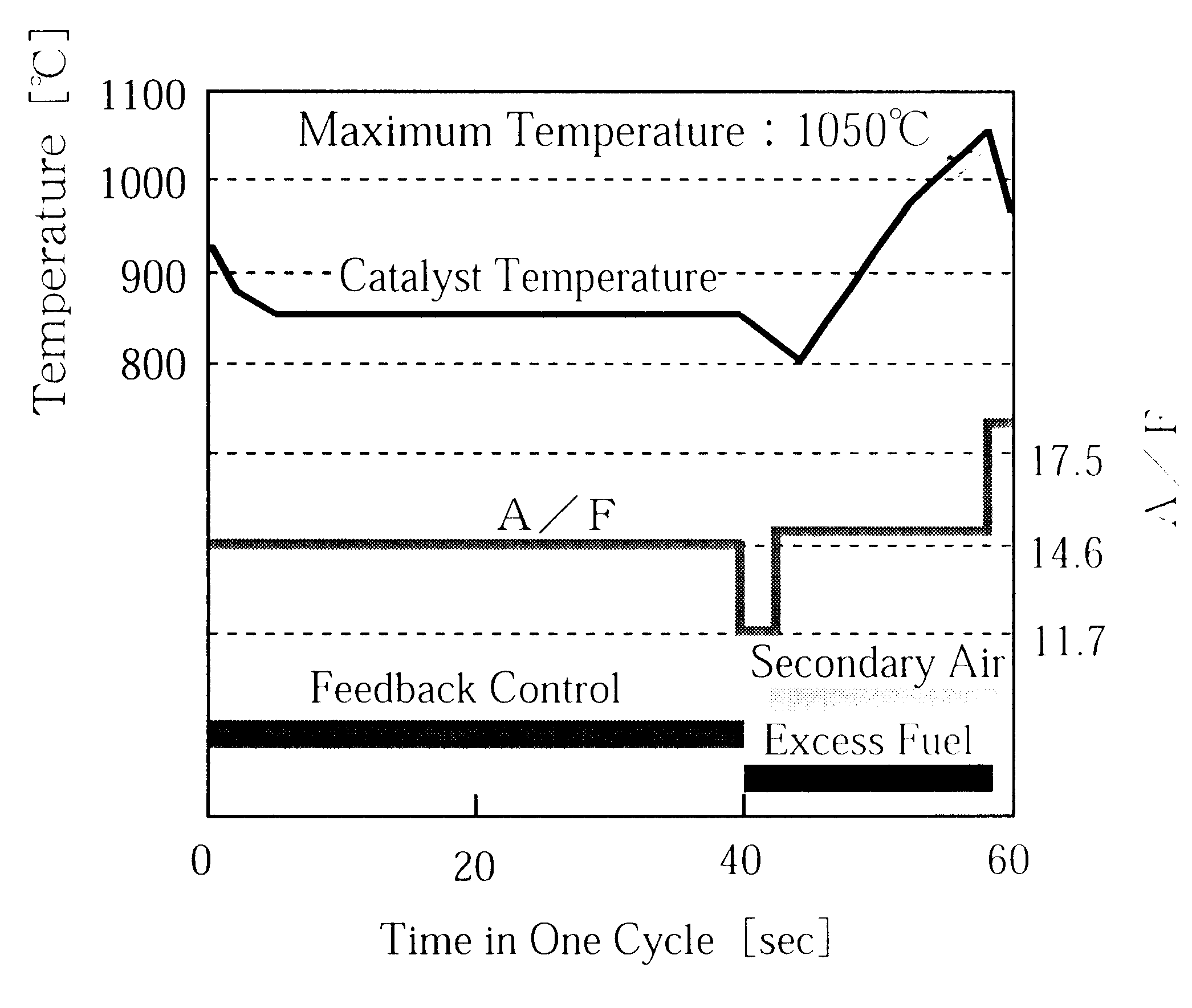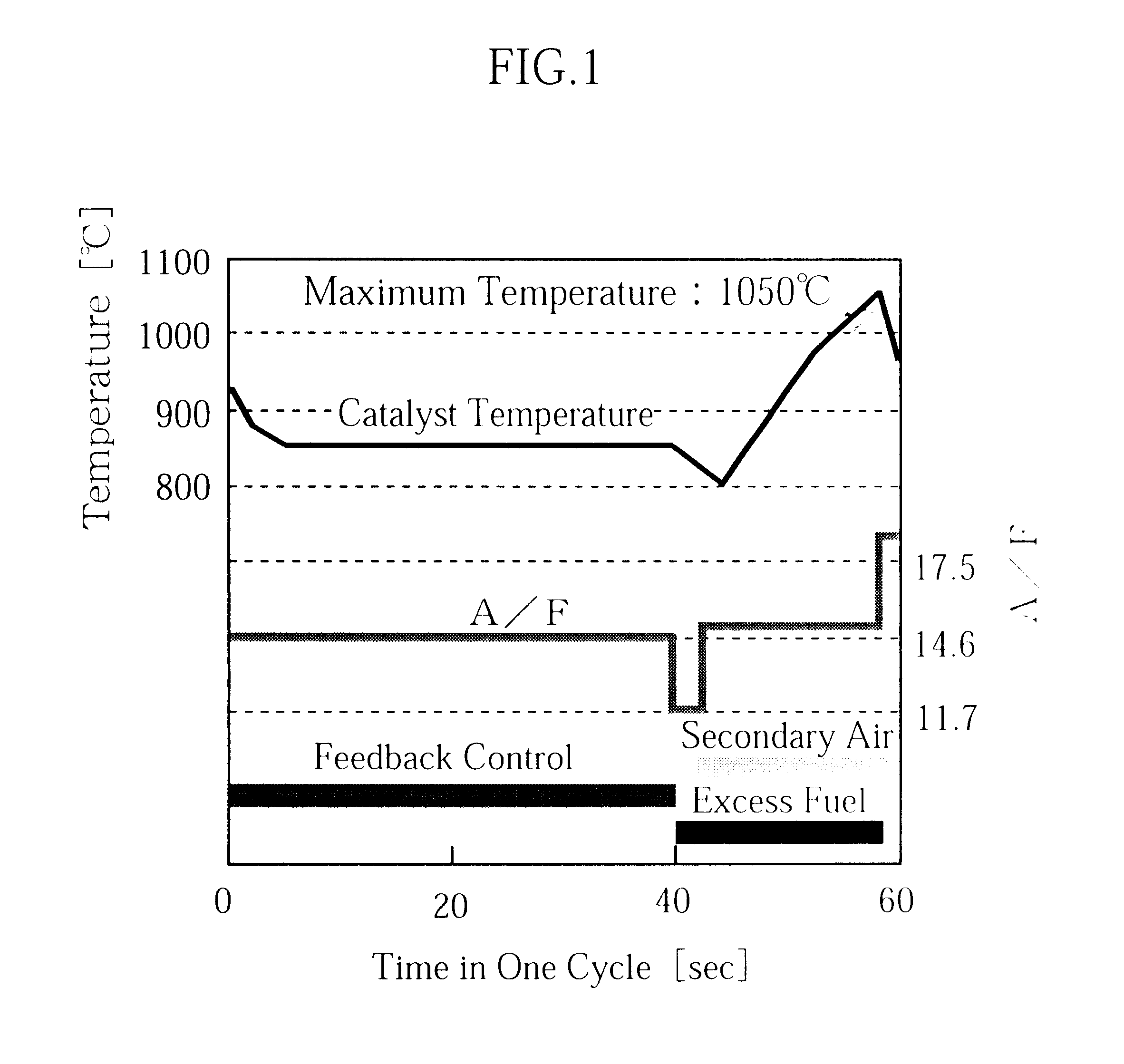Catalytic converter for cleaning exhaust gas
- Summary
- Abstract
- Description
- Claims
- Application Information
AI Technical Summary
Benefits of technology
Problems solved by technology
Method used
Image
Examples
embodiment
Emb.: Embodiment
C.E.: Comparative Example
CZY: Ce.sub.0.6 Zr.sub.0.3 Y.sub.0.1 Oxide
ZCLN: Zr.sub.0.80 Ce.sub.0.16 La.sub.0.02 Nd.sub.0.02 Oxide
ZCL: Zr.sub.0.7 Ce.sub.0.2 La.sub.0.1 Oxide
ZC: Zr.sub.0.9 Ce.sub.0.1 Oxide
ZCN: Zr.sub.0.8 Ce.sub.0.1 Nd.sub.0.1 Oxide
CZY2: Ce.sub.0.3 Zr.sub.0.5 Y.sub.0.2 oxide
CZ: Ce.sub.0.8 Zr.sub.0.2 O.sub.2
TABLE 2
Conclusion
As appreciated from Table 1 which shows the results with respect to the catalytic converters having a mono-layer catalytic coating, Pd selectively supported on the cerium complex oxide (CZY) and the combination of Pt and Rh selectively supported on the zirconium complex oxide (ZCLN) provide a higher CO--NO.sub.x removal cross point and a lower HC-50% removal temperature (see Embodiments 1 and 2) than achievable when these precious metals are non-selectively supported on the carrier substances (see Comparative Examples 1 and 2). In particular, the additional inclusion of barium sulfate in the catalytic coating provides excellent results d...
embodiments 5 and 6
Moreover, Embodiments 5 and 6 indicate that the exhaust gas cleaning performance of the catalytic converter will be additionally enhanced by the inclusion of Pt- and / or Rh-supporting cerium complex oxide in the second coating layer in addition to the Pt- & Rh-supporting zirconium complex oxide.
In conclusion, therefore, a catalytic converter according to the present invention may be advantageously incorporated in an intake manifold to provide a good catalytic activity promptly after an engine start and for a long time even at high temperature.
PUM
| Property | Measurement | Unit |
|---|---|---|
| Electrical resistance | aaaaa | aaaaa |
Abstract
Description
Claims
Application Information
 Login to View More
Login to View More - R&D
- Intellectual Property
- Life Sciences
- Materials
- Tech Scout
- Unparalleled Data Quality
- Higher Quality Content
- 60% Fewer Hallucinations
Browse by: Latest US Patents, China's latest patents, Technical Efficacy Thesaurus, Application Domain, Technology Topic, Popular Technical Reports.
© 2025 PatSnap. All rights reserved.Legal|Privacy policy|Modern Slavery Act Transparency Statement|Sitemap|About US| Contact US: help@patsnap.com



